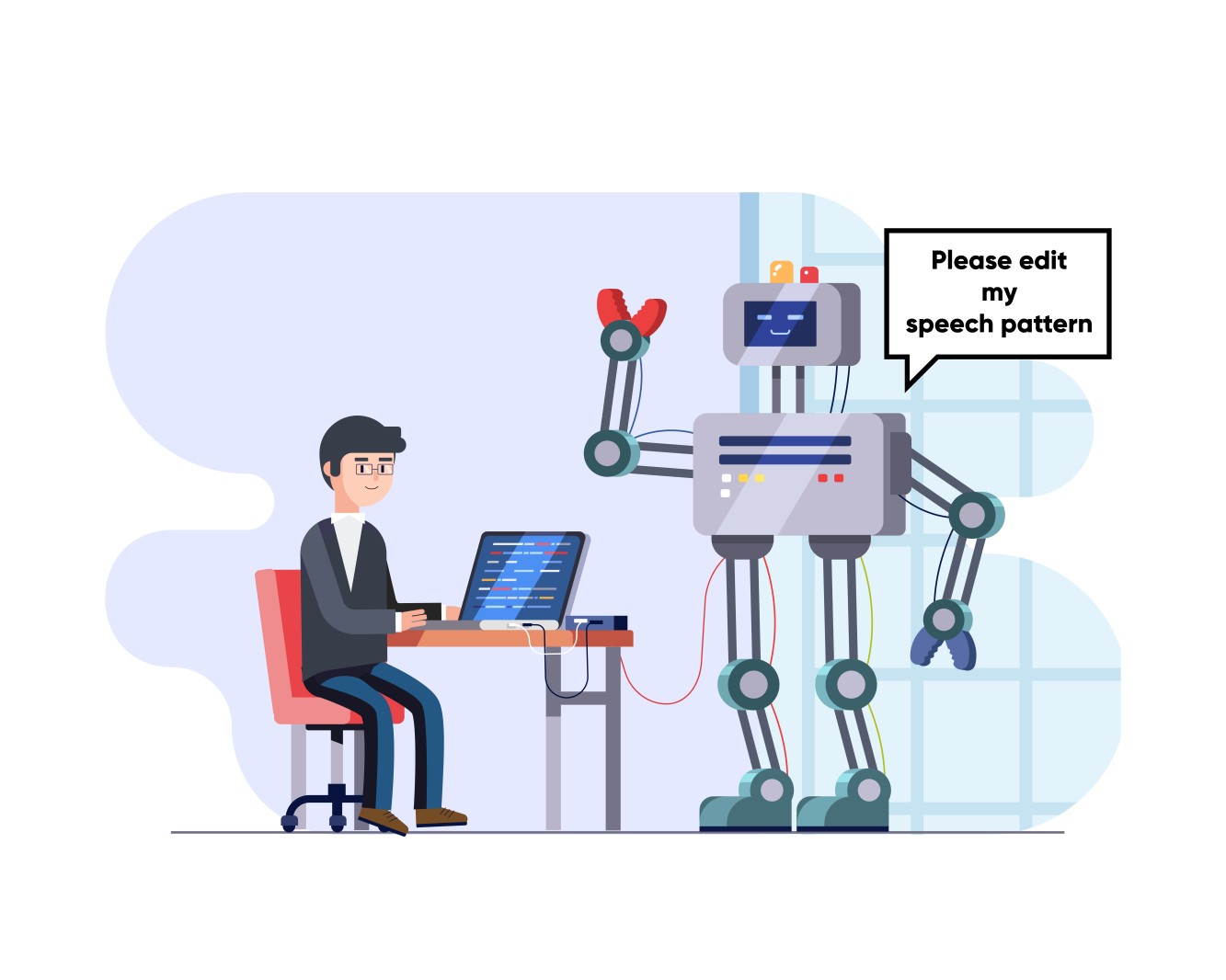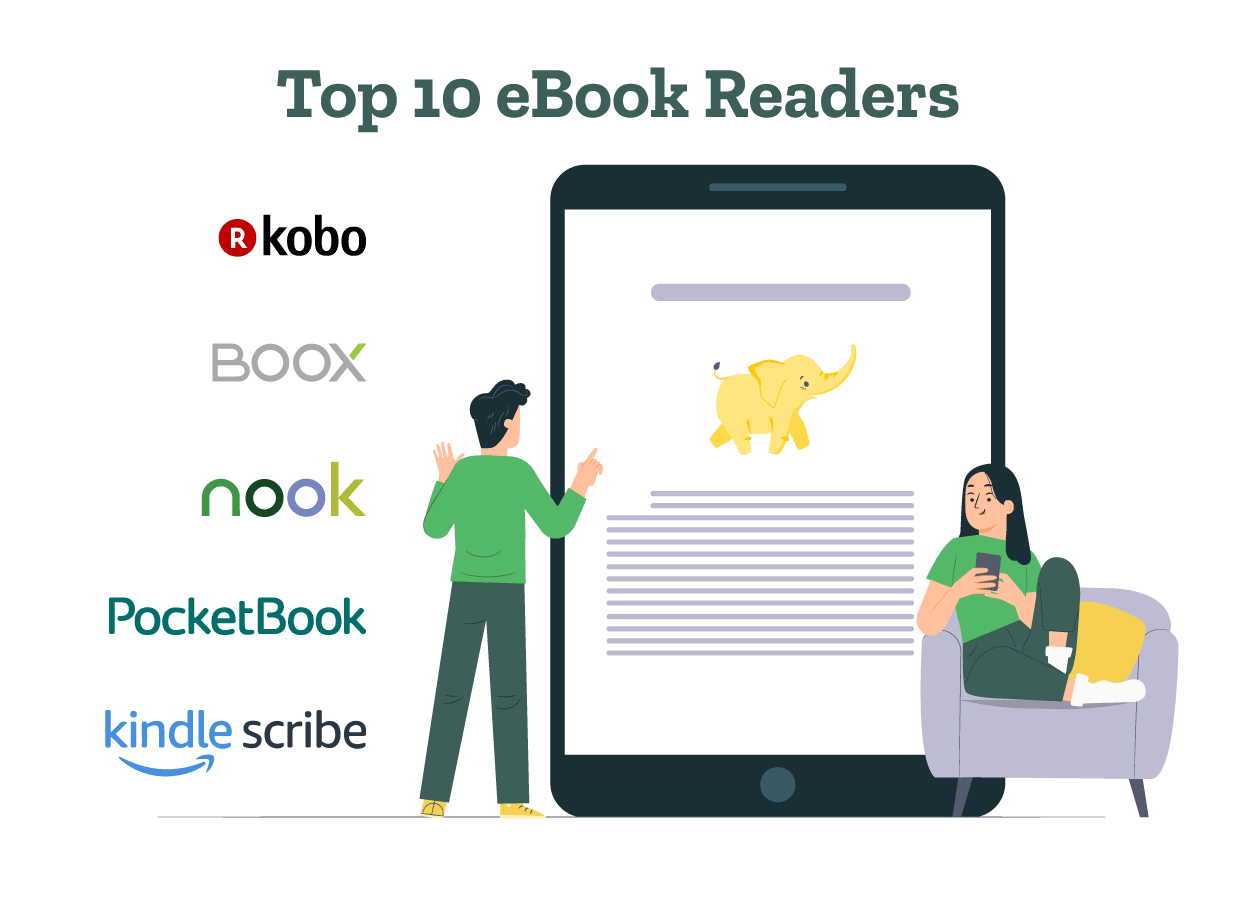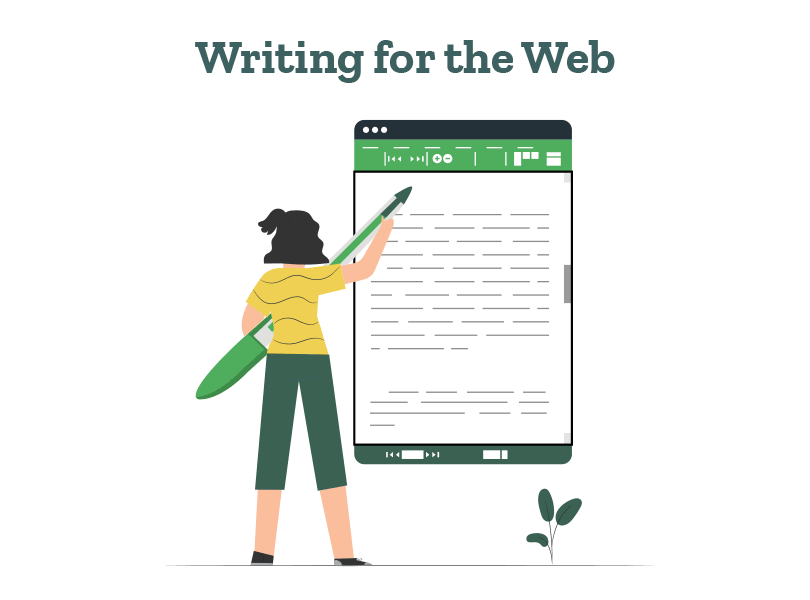- Tips to Self-Edit Your Dissertation
- Guide to Essay Editing: Methods, Tips, & Examples
- Journal Article Proofreading: Process, Cost, & Checklist
- The A–Z of Dissertation Editing: Standard Rates & Involved Steps
- Research Paper Editing | Guide to a Perfect Research Paper
- Dissertation Proofreading | Definition & Standard Rates
- Thesis Proofreading | Definition, Importance & Standard Pricing
- Research Paper Proofreading | Definition & Standard Rates
- Essay Proofreading | Options, Cost & Checklist
- Top 10 Paper Editing Services of 2024 (Costs & Features)
- Top 10 Essay Checkers in 2024 (Free & Paid)
- Top 10 English Correctors to Perfect Your Text in 2024
- 10 Advanced AI Text Editors to Transform Writing in 2024
- Personal Statement Editing Services: Craft a Winning Essay
- College Essay Review: A Step-by-Step Guide (With Examples)
- Top 10 College Essay Review Services: Pricing and Benefits
- How to Edit a College Admission Essay (8-Step Guide)
- Improve Academic Writing: Types, Tips, Examples, Services
- How to Use AI to Write Research Papers: A Step-by-Step Guide
- How to Write an Assignment: A Step-by-Step Guide for Students
- AI Proofreading Services: Meaning, Benefits & Best Tools
- 10 Best Proofreading Services Online for All in 2025
- Top 10 Recommendation Letter Editing Services | Best Picks
- How to Format an Appendix: APA and MLA
- Top 10 Online Thesis Editing and Proofreading Services
- What is Academic Editing? Meaning, Types & Importance
- Top 10 AI Proofreaders to Perfect Your Writing in 2025
- What Is a Thesis: How to Write a Thesis with Examples
- Top 10 Academic Proofreading Services (2025 Update)
- Research Paper Outline: Free Templates & Examples to Guide You
- How to Write a Research Paper: A Step-by-Step Guide
- How to Write a Lab Report: Examples from Academic Editors
- Research Methodology Guide: Writing Tips, Types, & Examples
- The 10 Best Essential Resources for Academic Research
- 100+ Useful ChatGPT Prompts for Thesis Writing in 2024
- Best ChatGPT Prompts for Academic Writing (100+ Prompts!)
- Sampling Methods Guide: Types, Strategies, and Examples
- Independent vs. Dependent Variables | Meaning & Examples
- Understanding Verbatim Plagiarism: Copy, Paste, Regret
- What Is a Journal Article and How to Write a Journal Article
- How to Use AI to Write Research Papers: A Step-by-Step Guide
- Top 10 AI Tools for Research in 2025 (Fast & Efficient!)
- What Is a Research Proposal: A Detailed Guide
- How to Format an Appendix: APA and MLA
- What Is an Appendix In a Paper?
- Types of Journals in Research and Their Features
- How to Write a Research Proposal (Step-by-Step)
- How to Cite an Artwork: APA, MLA, & Chicago
- Difference Between Paper Editing and Peer Review
- How to Handle Journal Rejection: Essential Tips
- Editing and Proofreading Academic Papers: A Short Guide
- How to Carry Out Secondary Research
- The Results Section of a Dissertation
- Final Checklist: Is My Article Ready for Submitting to Journals?
- Types of Research Articles to Boost Your Research Profile
- How does LaTeX based proofreading work?
- How to Improve Your Scientific Writing: A Short Guide
- Chicago Title, Cover Page & Body | Paper Format Guidelines
- How to Write a Thesis Statement: Examples & Tips
- Chicago Style Citation: Quick Guide & Examples
- Research Paper Outline: Free Templates & Examples to Guide You
- The A-Z Of Publishing Your Article in A Journal
- What is Journal Article Editing? 3 Reasons You Need It
- How to Cite a Book in APA Style | Format & Examples
- How to Start a Research Paper | Step-by-step Guide
- APA Citations Made Easy with Our Concise Guide for 2024
- A Step-by-Step Guide to APA Formatting Style (7th Edition)
- Academic Writing in 2024: 5 Key Dos & Don’ts + Examples
- How to Write a Lab Report: Examples from Academic Editors
- What Are the Standard Book Sizes for Publishing Your Book?
- MLA Works Cited Page: Quick Tips & Examples
- 2024’s Top 10 Thesis Statement Generators (Free Included!)
- Top 10 Title Page Generators for Students in 2024
- What Is an Open Access Journal? 10 Myths Busted!
- Primary vs. Secondary Sources: Definition, Types & Examples
- How To Write a College Admissions Essay That Stands Out
- APA Journal Citation: 7 Types, In-Text Rules, & Examples
- What Is Predatory Publishing and How to Avoid It!
- Independent vs. Dependent Variables | Meaning & Examples
- How to Write a Strong Dissertation & Thesis Introduction
- How to Cite a Book in MLA Format (9th Edition)
- How to Cite a Website in MLA Format | 9th Edition Rules
- 10 Best AI Conclusion Generators (Features & Pricing)
- Top 10 Academic Editing Services of 2024 [with Pricing]
- How to Create the Perfect Thesis Title Page in 2024
- What Is Accidental Plagiarism & 9 Prevention Strategies
- What Is Self-Plagiarism? (+ 7 Prevention Strategies!)
- Understanding Verbatim Plagiarism: Copy, Paste, Regret
- Improve Academic Writing: Types, Tips, Examples, Services
- What Is a Journal Article and How to Write a Journal Article
- What Is Paraphrasing Plagiarism and How to Avoid It
- What Is Expository Writing? Types, Examples, & 10 Tips
- Academic Research Ethics & Rules Simplified for All
- Complete Guide to MLA 9th Format
- Top 10 Online Dissertation Editing Services of 2025
- How to Write a Dissertation & Thesis Conclusion (+ Examples)
- What Is a Peer Review & 8 Types of Peer Review Processes
- 50 Best Essay Prompts for College Students in 2025
- What Is an Annotated Bibliography & Writing One Using AI
- What Is an Appendix In a Paper?
- Types of Journals in Research and Their Features
- 5 Effective Personal Statement Examples & Templates
- 100+ Writing Prompts for College Students (10+ Categories!)
- What Is a Thesis: How to Write a Thesis with Examples
- What Is Plagiarism? Meaning, Types & Examples
- How to Write a Research Proposal (Step-by-Step)
- Preventing Plagiarism in Your Thesis: Tips & Best Practices
- Final Submission Checklist | Dissertation & Thesis
- 7 Useful MS Word Formatting Tips for Dissertation Writing
- How to Write a MEAL Paragraph: Writing Plan Explained in Detail
- How does LaTeX based proofreading work?
- Em Dash vs. En Dash vs. Hyphen: When to Use Which
- 2024’s Top 10 Self-Help Books for Better Living
- Top 10 Paper Editing Services of 2024 (Costs & Features)
- 100+ Useful ChatGPT Prompts for Thesis Writing in 2024
- Best ChatGPT Prompts for Academic Writing (100+ Prompts!)
- MLA Works Cited Page: Quick Tips & Examples
- 2024’s Top 10 Thesis Statement Generators (Free Included!)
- Top 10 Title Page Generators for Students in 2024
- 10 Advanced AI Text Editors to Transform Writing in 2024
- Top 10 Academic Editing Services of 2024 [with Pricing]
- Know Everything About How to Make an Audiobook
- How to Create the Perfect Thesis Title Page in 2024
- Mastering Metaphors: Definition, Types, and Examples
- 10 Best Paid & Free Citation Generators (Features & Costs)
- The 10 Best Free Character and Word Counters of 2025
- What Is an Annotated Bibliography & Writing One Using AI
- Top 10 AI Proofreaders to Perfect Your Writing in 2025
- What Is Plagiarism? Meaning, Types & Examples
- Top 10 Academic Proofreading Services (2025 Update)
- Citing References: APA, MLA, and Chicago
- How to Cite Sources in the MLA Format
- MLA Citation Examples: Cite Essays, Websites, Movies & More
- Chicago Title, Cover Page & Body | Paper Format Guidelines
- Chicago Style Citation: Quick Guide & Examples
- Citations and References: What Are They and Why They Matter
- APA Headings & Subheadings | Formatting Guidelines & Examples
- Formatting an APA Reference Page | Template & Examples
- How to Create an MLA Title Page | Format, Steps, & Examples
- How to Create an MLA Header | Format Guidelines & Examples
- MLA Annotated Bibliography | Guidelines and Examples
- APA Website Citation (7th Edition) Guide | Format & Examples
- APA Citations Made Easy with Our Concise Guide for 2024
- APA Citation Examples: The Bible, TED Talk, PPT & More
- APA Header Format: 5 Steps & Running Head Examples
- A Step-by-Step Guide to APA Formatting Style (7th Edition)
- How to Write an Abstract in MLA Format: Tips & Examples
- APA Journal Citation: 7 Types, In-Text Rules, & Examples
- How to Cite a Book in MLA Format (9th Edition)
- How to Cite a Website in MLA Format | 9th Edition Rules
- 10 Best Paid & Free Citation Generators (Features & Costs)
- Complete Guide to MLA 9th Format
- Research Paper Format: APA, MLA, & Chicago Style
- 5 Reasons Why It Is Important To Cite Your Sources
- APA Title Page Format Simplified | Examples + Free Template
- How to Cite an Artwork: APA, MLA, & Chicago
- 10 Best Free Plagiarism Checkers | Accurate & Reliable Tools
- Writing a Dissertation Proposal
- The Acknowledgments Section of a Dissertation
- The Table of Contents Page of a Dissertation
- The Introduction Chapter of a Dissertation
- Tips to Self-Edit Your Dissertation
- The Results Section of a Dissertation
- Preventing Plagiarism in Your Thesis: Tips & Best Practices
- Final Submission Checklist | Dissertation & Thesis
- The Only Dissertation Toolkit You’ll Ever Need!
- 7 Useful MS Word Formatting Tips for Dissertation Writing
- 5 Thesis Writing Tips for Master Procrastinators
- The 5 Things to Look for in a Dissertation Editing Service
- Top 10 Dissertation Editing & Proofreading Services
- Why is it important to add references to your thesis?
- Thesis Editing | Definition, Scope & Standard Rates
- Expert Formatting Tips on MS Word for Dissertations
- A 7-Step Guide on How to Choose a Dissertation Topic
- 350 Best Dissertation Topic Ideas for All Streams in 2024
- A Guide on How to Write an Abstract for a Research Paper
- Dissertation Defense: What to Expect and How to Prepare
- Creating a Dissertation Title Page (Examples & Templates)
- Top 10 Online Dissertation Editing Services of 2025
- A Beginner’s Guide to How to Write a Dissertation in 2025
- What Is a Research Proposal: A Detailed Guide
- How to Write a Dissertation Literature Review: Tips and Structure
- What Is a Thesis: How to Write a Thesis with Examples
- Essential Research Tips for Essay Writing
- How to Write a MEAL Paragraph: Writing Plan Explained in Detail
- How to Write a Thesis Statement: Examples & Tips
- What Is a Mind Map? Free Mind Map Templates & Examples
- How to Write an Essay Outline: Free Template & Examples
- How to Write an Essay: 8 Simple Steps with Examples
- Expository Essay: Structure, Tips, and Examples
- Guide to Essay Editing: Methods, Tips, & Examples
- Narrative Essays: Structure, Tips, and Examples
- How to Write an Argumentative Essay (Examples Included)
- How to Write a Conclusion for an Essay (Examples Included!)
- How to Write an Impactful Personal Statement (Examples Included)
- Literary Analysis Essay: 5 Steps to a Perfect Assignment
- How to Write a Compare and Contrast Essay: Tips & Examples
- Top 10 Essay Checkers in 2024 (Free & Paid)
- 100 Best College Essay Topics & How to Pick the Perfect One!
- College Essay Format: Tips, Examples, and Free Template
- 10 Best AI Essay Outline Generators of 2024
- Personal Statement Editing Services: Craft a Winning Essay
- College Essay Review: A Step-by-Step Guide (With Examples)
- Top 10 College Essay Review Services: Pricing and Benefits
- How to Write an Assignment: A Step-by-Step Guide for Students
- The Four Main Types of Essay | Quick Summary with Examples
- How to Write an Essay Introduction | 4 Examples & Steps
- 10 Best AI Essay Writing Tools in 2025
- How to Write a Descriptive Essay | Examples and Structure
- Structure of an Essay: 5 Tips to Write an Outstanding Essay
- Types of Introductions and Examples
- Top 10 Essay Editing Services of 2025
- The Best Essay Graders of 2025 That You Can Use for Free!
- What Is an Essay? A Comprehensive Guide to Structure and Types
- Top 10 Free Essay Writing Tools for Students in 2025
- How to Write an Essay Header: MLA and APA Essay Headers
Still have questions? Leave a comment

Checklist: Dissertation Proposal
Enter your email id to get the downloadable right in your inbox!
[contact-form-7 id="12425" title="Checklist: Dissertation Proposal"]
Examples: Edited Papers
Enter your email id to get the downloadable right in your inbox!
[contact-form-7 id="12426" title="Examples: Edited Papers"]Need
Editing and
Proofreading Services?

How to Avoid Plagiarism in 2025 (10 Effective Strategies!)
Oct 14, 2025
6 min read
- Tags: Academic Writing, Language, Plagiarism, Writing Tips
Plagiarism is the act of presenting someone else’s ideas or words as your own without giving proper credit. It’s a serious academic offense that can lead to severe consequences.
This comprehensive guide explores what plagiarism is, why avoiding it matters, and provides 10 actionable strategies to ensure your work remains original and properly attributed.
We’ve also included many free tools that can help you avoid plagiarism while writing!
How to avoid plagiarism (10 strategies)
1. Cite all sources accurately
If you’re writing a thesis, dissertation, or research paper, use the given citation format (APA, MLA, Chicago, or other). Also, include in-text citations and cite the sources on the reference page as well.
For direct quotes, use quotation marks and provide page numbers when applicable. You can also use citation generators like Citation Machine, Zotero, and BibMe to generate accurate citations. However, always double-check automated citations against your style guide, as these tools occasionally make mistakes.
2. Paraphrase the content in your own words
Paraphrasing doesn’t mean only using synonyms of some words to make the text different. It involves understanding the main idea and changing the entire sentence structure. For example, if the sentence in the source starts with, “The person is…”, ensure that the sentence you use does not begin with, “The person is…”
Start by reading the source material thoroughly, then set it aside and write your understanding from memory. This technique helps ensure you’re expressing concepts in your own words rather than unconsciously mimicking the original text.
The following are some ways to avoid plagiarism by paraphrasing:
-
-
- Combine related ideas in a single sentence or split a long sentence into two parts.
- Summarize important information and keep the most important idea.
- Use alternative phrasing by referring to the One Look dictionary at https://www.onelook.com. This dictionary can give you alternative phrasing after you describe the phrase you’re looking for.
-
If you’re having difficulty paraphrasing, you can use advanced AI paraphrasing tools like QuillBot, Paraphrase.io, WordAI, and SpinBot.
3. Understand the types of plagiarism
Plagiarism involves not only using others’ ideas but also reusing your own work without citing the original source. If you’re rearranging the order of sentences from a source or combining ideas from multiple texts to create a new work, it can also constitute plagiarism.
Mosaic or patchwork plagiarism combines phrases from multiple sources without proper attribution, while accidental plagiarism results from poor note-taking or unfamiliarity with citation standards.
Knowing the various types of plagiarism helps you identify potential issues in your writing before they become problems.
4. Use plagiarism checkers
Plagiarism checkers serve as valuable safety nets, identifying potential issues before submission. Free tools like DupliChecker, Small SEO Tools, and Grammarly’s plagiarism detector can catch unintentional similarities. For more comprehensive checking, consider premium services like Turnitin or Copyleaks, which compare your work against extensive databases of academic papers, websites, and publications.
Run your work through these tools during the writing process, not just at the end. This allows you to address issues as they arise rather than facing major revisions later.
5. Give your unique perspective
Consider how your personal experiences or expertise can contribute to the topic. Another method is to use your research to develop your arguments and give new perspectives rather than simply summarizing others’ ideas. Though these steps to avoid plagiarism take research and reflection, they are useful in the long run!
Also, when illustrating your points, use original examples or case studies that you have developed yourself. This can help you avoid over-reliance on the examples provided in your sources.
6. Use library resources and online academic resources
Libraries subscribe to a wide range of online databases that provide access to scholarly articles, journals, and other credible sources. You can use these resources to recheck the original author of a source to avoid plagiarism. JSTOR Open Access, Project Gutenberg, and Directory of Open Access Journals are some popular online libraries you can use.
You can also use academic research resources like PubMed and Google Scholar that credit the original authors. This will help in avoiding plagiarism.
Now let’s understand how can you avoid plagiarism by tracking and organizing sources!
7. Track and organize all sources
Create a systematic approach to tracking sources from the beginning of your research.
You can use reference management tools like Zotero, Mendeley, and Citavi Free (Windows) to organize references. Alternatively, you can create a separate folder of your references on your computer that has a list of references, including the original author’s name, source name, date accessed, URL, and DOI (if any).
To avoid plagiarism, you should also take notes on key ideas and include specific page numbers for references. You can use writing tools like Evernote, Google Docs, OneNote, Simplenote, or Zoho Notebook to take notes.
Using different colors, fonts, or symbols in your notes can help prevent confusion later. This organization proves invaluable when you need to verify citations or locate specific information.
8. Recheck, proofread, and add/correct citations
To understand how you can prevent plagiarism, follow the steps given below:
-
-
-
- Read through your work to make sure that your language is easy to understand.
- Compare your in-text citations with your reference list to ensure that every source mentioned
- Double-check that any direct quotations are enclosed in quotation marks and that the source is properly cited.
-
-
Now, let’s understand how to prevent plagiarism through effective communication with people belonging to the same field.
9. Engage in discussions
Participate in class discussions, online forums, or study groups to share your ideas and learn from others. Engaging in dialogue can help you refine your own perspective and generate new ideas for your writing.
Document these discussions in your notes, as they can become valuable sources of original thinking for your writing.
10. Take feedback
Consult with your instructor, supervisor, or librarian if you have any doubts or questions about avoiding plagiarism or citation practices. You can also ask students or experts in the same field to resolve your doubts.
This concludes our guide about the steps to prevent plagiarism! You can bookmark this article to revisit these 10 tips about how to avoid plagiarism.
Common plagiarism pitfalls and how to avoid them
Even conscientious writers can inadvertently plagiarize. Common mistakes include forgetting to cite common knowledge that’s actually field-specific, inadequately paraphrasing complex technical language, or assuming that citing once covers multiple uses of the same source. Stay vigilant about these potential issues and err on the side of over-citation when in doubt.
This concludes our guide about the steps to prevent plagiarism! Remember that academic integrity reflects your commitment to scholarly excellence and professional ethics. The effort you invest in avoiding plagiarism not only protects you from serious consequences but also strengthens your research skills.
After understanding the ways to avoid plagiarism, select the relevant steps to prevent plagiarism, or if you want to save time, you can use PaperTrue’s plagiarism-checking services. Along with checking plagiarism, we also provide expert editing and proofreading services.
Do you have any other tips for avoiding plagiarism? Share any other strategies to prevent plagiarism in the comments section!
Here are some other useful resources for you:






